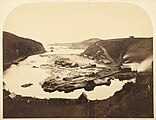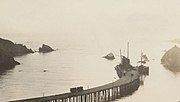History
Captain William A. Richardson built a sawmill at the mouth of the Albion River in 1853. [5] This logging operation incorporated the Albion River Railroad Company on September 24, 1885 to haul logs down the Albion River to the sawmill. The railroad extended 11.6 miles (18.7 km) to Keene's summit when it was reorganized with the sawmill on May 26, 1891 as the Albion Lumber Company [4] with headquarters in San Francisco. Lumber was loaded onto ships from a wharf at the mouth for the Albion River for drying and planing in San Francisco. [5]
H. B. Tichnor and Company built a sawmill at the mouth of the Navarro River in 1861. This logging operation was reorganized as the Navarro Mill Company in 1886 and loaded lumber onto ships from a millside wharf. Navarro Mill Company had extended a logging railroad 14 miles (23 km) up the Navarro River by the time the sawmill burned in 1902. The focus of logging operations in the Navarro River watershed then shifted to the community of Wendling, near the upstream extent of the Navarro Mill Company railway. [5]
The Albion and Southeastern Railroad was formed on April 1, 1902 to purchase the railway from the Albion Lumber Company and extend it into the Anderson Valley of the Navarro River to Boonville, California. The Santa Fe Railway incorporated the Fort Bragg and Southeastern Railroad on March 25, 1903 with intention to extend the Albion and Southeastern through the Dry Creek drainage for a connection with national railway system at Healdsburg, California. The Fort Bragg and Southeastern completed construction from Keene's Summit to Wendling on September 15, 1905. Switchbacks were required near Keene's Summit. [4] A. G. Stearns built a sawmill in Wendling in 1905. The Wendling sawmill was reorganized as the Navarro Lumber Company in 1914. The community of Wendling was renamed Navarro as the local population shifted from the old coastal community of Navarro (which changed its name to Navarro-by-the-sea) to follow the logging and milling jobs. [5]
The Fort Bragg and Southeastern was included in the Northwestern Pacific Railroad merger on January 8, 1907. Southern Pacific Transportation Company purchased the Albion Lumber Company in 1907 to manufacture ties and bridge timbers for railway construction in Mexico. [4] The Albion Lumber Company purchased the Navarro Lumber Company in May 1920. [5] The Fort Bragg and Southeastern was extended 3 miles (4.8 km) past Wendling to a point known as Christine, and a branch line extended one mile up the Albion River from Clearbrook Junction. Albion Lumber Company trackage extended the Clearbrook branch 8 miles (13 km) toward Comptche, California and Navarro Lumber Company trackage extended 4 miles (6.4 km) past Christine. There were numerous shorter logging branches owned by the lumber companies, but trains never reached Boonville or Healdsburg. [4] Operation of the Navarro sawmill ended in September 1927; [5] and the last log went through the Albion sawmill on May 19, 1928. The railroad ceased operation on January 16, 1930 and was dismantled for scrap in 1937. [4]
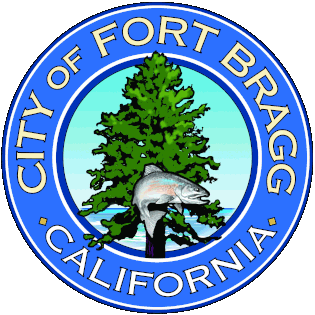
Fort Bragg is a city along the Pacific Coast of California along Shoreline Highway in Mendocino County. The city is 24 miles (39 km) west of Willits, at an elevation of 85 feet (26 m). Its population was 6,983 at the 2020 census.
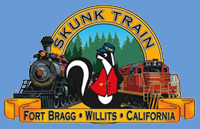
The California Western Railroad, AKA Mendocino Railway, popularly called the Skunk Train, is a rail freight and heritage railroad transport railway in Mendocino County, California, United States, running from the railroad's headquarters in the coastal town of Fort Bragg to the interchange with the Northwestern Pacific Railroad at Willits.

The Navarro River is a 28.3-mile-long (45.5 km) river in Mendocino County, California, United States. It flows northwest through the Coastal Range to the Pacific Ocean. The main stem of the Navarro River begins less than 1 mile (2 km) south of the town of Philo at the confluence of Rancheria Creek and Anderson Creek. The mouth of the Navarro is 10 miles (16 km) south of the city of Mendocino. State Route 128 starts from the intersection of State Route 1 at the mouth of the Navarro River, and follows the river valley upstream to Philo. The river is close to the highway through the lower canyon but is some distance south of the highway as the Anderson Valley widens upstream of Wendling.
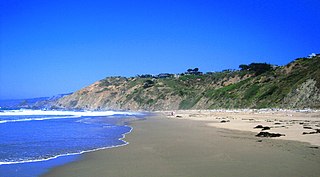
Elk is an unincorporated community in Mendocino County, California.

Navarro River Redwoods State Park is a state park in Mendocino County, California, consisting of 660 acres (2.7 km2) of second-growth redwood forest in a narrow stretch 11 miles (18 km) long on both banks of the Navarro River, from the town of Navarro to the river's confluence with the Pacific Ocean.

The Northwestern Pacific Railroad is a 271-mile (436 km) mainline railroad from the ferry connections in Sausalito, California north to Eureka with a connection to the national railroad system at Schellville. The railroad has gone through a history of different ownership and operators but has maintained a generic name of reference as The Northwestern Pacific Railroad, despite no longer being officially named that. Currently, only a 62-mile (100 km) stretch of mainline from Larkspur to the Sonoma County Airport in Windsor and east to Schellville on the “south end” is operated by Sonoma–Marin Area Rail Transit (SMART), which operates both commuter and freight trains with plans for future extension north to Cloverdale. The “north end” from Willits to Eureka is currently out of service, but saved by 2018 legislation to be converted into the Great Redwood Trail.

The Arcata and Mad River Railroad, founded in 1854, was the oldest working railroad in California. It operated on a unique narrow gauge until the 1940s when standard gauge rails were laid. Service ceased in 1983 due to landslides. It is California Historical Landmark #842.

The Albion River is an 18.1-mile-long (29.1 km) river in Mendocino County, California. The river drains about 43 square miles (110 km2) on the Mendocino Coast and empties into the Pacific Ocean near the town of Albion, California, where California State Route 1 crosses it on the Albion River Bridge. The river's overall direction is east to west, but it moves significantly in the north-south direction. The tributaries of the river include Railroad Gulch, Pleasant Valley Creek, Duck Pond Gulch, South Fork Albion River, Tom Bell Creek, North Fork Albion River, and Marsh Creek. The river's most inland point is only 15 miles (24 km) from the coast, and its highest elevation is about 1,570 feet (480 m) above sea level. There is a large estuary at the mouth of the river, and tidal waters travel up to 5 miles (8 km) upstream. The Albion River was previously used to power a sawmill on the river mouth, but there are no major dams or reservoirs on the river. The river provides recreation, groundwater recharge and industrial water supply for the community of Albion, and wildlife habitat including cold freshwater habitat for fish migration and spawning.
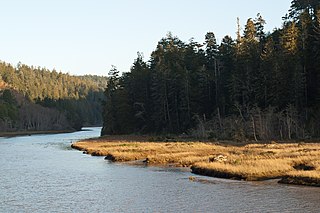
The Big River is a 41.7-mile-long (67.1 km) river in Mendocino County, California, that flows from the northern California Coast Range to the Pacific Ocean at Mendocino, Mendocino County, California. From the mouth, brackish waters extend 8 miles (13 km) upstream, forming the longest undeveloped estuary in the state.
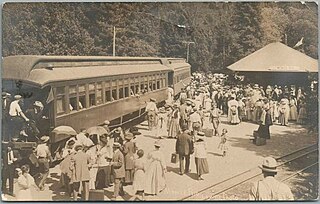
The North Pacific Coast Railroad (NPC) was a common carrier 3 ft (914 mm) narrow-gauge steam railroad begun in 1874 and sold in 1902 to new owners who renamed it the North Shore Railroad (California) (NSR) and which rebuilt the southern section into a standard-gauge electric railway.

Redwood Empire Council is the local council of the Boy Scouts of America that serves youth in Mendocino and Sonoma counties in California.

San Francisco and North Pacific Railroad (SF&NP) provided the first extensive standard gauge rail service to Sonoma County and became the southern end of the regional Northwestern Pacific Railroad. Although first conceived of by Asbury Harpending, who had even obtained many of the right of ways, the SF&NP was bought and subsequently constructed by Peter Donahue, who drove the first spike on August 30, 1869.

A forest railway, forest tram, timber line, logging railway or logging railroad is a mode of railway transport which is used for forestry tasks, primarily the transportation of felled logs to sawmills or railway stations.
Rockport is a former settlement in an unincorporated area of Mendocino County, California. It is located 7.25 miles (12 km) north-northwest of Westport, at an elevation of 30 feet.

Andersonia is an unincorporated community in Mendocino County, California. It is located near U.S. Route 101 on the South Fork of the Eel River 1 mile (1.6 km) north-northwest of Piercy, at an elevation of 541 feet.

Navarro is an unincorporated community in Mendocino County in the U.S. state of California. It is located 18 miles (29 km) west of Ukiah, at an elevation of 269 feet (82 m). It may be reached via the east–west California State Route 128, which connects it to the Pacific coast to the west and to the Anderson Valley to the southeast.
The Caspar, South Fork & Eastern Railroad provided transportation for the Caspar Lumber Company in Mendocino County, California. The railroad operated the first steam locomotive on the coast of Mendocino County in 1875. Caspar Lumber Company lands became Jackson Demonstration State Forest in 1955, named for Caspar Lumber Company founder, Jacob Green Jackson.
Southern Pacific Transportation Company formed the Oregon and Eureka Railroad Company in 1903 in an agreement to use logging railroads as part of a line connecting Humboldt County (California) sawmills with the national rail network. Northwestern Pacific Railroad offered service over the route from 1911 through 1933. The northern 6-mile (9.7 km) of the line remained in use as a Hammond Lumber Company logging branch until 1948.
Mendocino Lumber Company operated a sawmill on Big River near the town of Mendocino, California. The sawmill began operation in 1853 as the Redwood Lumber Manufacturing Company, and changed ownership several times before cutting its final logs in 1938. The sawmill site became part of the Big River Unit of Mendocino Headlands State Park where a few features of the mill and its associated forest railway are still visible along the longest undeveloped estuary in northern California.

